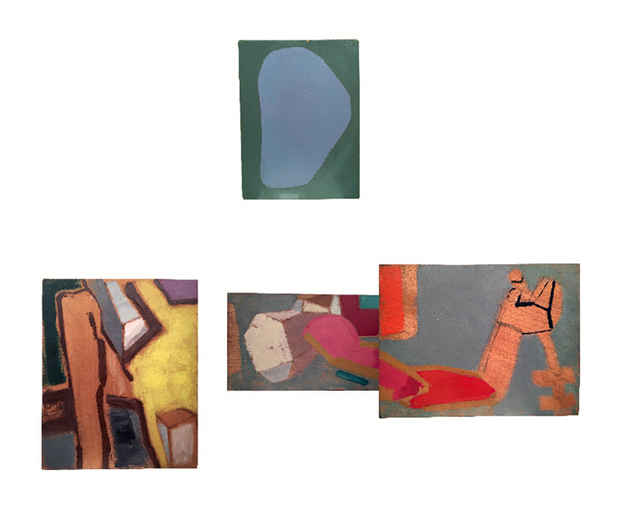Frederick Kiesler “Galaxies of the 1950s”
Jason McCoy, Inc. (Midtown)

[Image: Frederick Kiesler "Galaxy D" (1952) tempera and oil on wood, four parts.]
This event has ended.
Jason McCoy Gallery presents an exhibition focused on Frederick Kiesler’s Galaxies of the 1950s, including two newly discovered works.
Blurring the divide between painting, sculpture, and installation, these multi-paneled paintings were sparked by the artist’s response to the political and social upheaval of his time. Conceived only a few years after the atomic bombings of Hiroshima and Nagasaki, Kiesler described his inspiration for the Galaxies as follows:
“If the reassessment of values in these tense times is of necessity for each and all of us, one is convinced that the artist’s work too can no longer be placed in isolation: that art must strive again to become part of daily experience. It seems, therefore, that painters, sculptors, and architects must conceive their work – as part of the world.”
During the 1950s, Frederick Kiesler created a series of paintings, which translated his vision of space into multi-paneled installations that protruded from the wall. Synthesizing painting, sculpture and drawing, the Galaxies were presented as grouped units. To Kiesler, the space between the different parts was just as important as the paintings themselves. To him, it marked a reflection of the “inner necessity” of the work as a whole. He noted that it was the same as what “breathing is to our body reality.” Kiesler wrote further: “Each painting represents a definite unit in itself just as in one family each member is of distinct individuality. Yet, their firm cohesion (into one) is inborn no matter how heterogeneous the character of the members might be. Under these circumstances, it seems natural that each painted unit, particularly when protruding from the wall, and viewed from the side, will also assume the value of a plastic entity, very much in the sense of sculpture, while the aspect of the total galaxy promotes too, the idea of an architectural coordinate without destroying the main character as a painting. Thus the traditional division of the plastic arts, sculpture, and architecture, is transmuted and overcome and their fluid unification is now contained within rather than combined from without.”
Frederick Kiesler was born in 1890 in Tschernovitz, formerly part of the Austro-Hungarian Empire, which today belongs to the Ukraine. He studied at the Technische Hochschule (1908-09) and at the Akademie der Bildenden Künste (1910-1912) in Vienna. In the following years, he was heavily engaged in theatre, in both Vienna and Berlin, designing stages and choreographing performances. He became a member of the De Stijl group in 1923 and in the following year, he arranged the world premiere of the 16-minute film Ballet mécanique directed by Dudley Murphy and Fernand Léger, with Man Ray, in Vienna. Kiesler moved to New York City in 1926, where he remained until his death in 1965. There he collaborated with the Surrealists, completing landmark projects with Marcel Duchamp and Andre Breton, for example. From 1937 to 1943, Kiesler was the director of the Laboratory for Design Correlation within the Department of Architecture at Columbia University. One of his most famous projects was completed in 1942 when he designed Peggy Guggenheim’s The Art of This Century Gallery in New York. In 1952, The Museum of Modern Art named Kiesler as one of “the 15 leading artists at mid-century.”
The work of Frederick Kiesler has been subject of numerous museum exhibitions worldwide, including at the Solomon R. Guggenheim Museum; Whitney Museum of American Art; Centre Georges Pompidou; MAK, Vienna, and the Martin Gropius Bau, Berlin, among others. His work is collected in depth by the Museum of Modern Art, the Solomon R. Guggenheim Museum, the Whitney Museum of American Art, and the Philadelphia Museum of Art, among others.
Media
Schedule
from March 01, 2017 to April 21, 2017